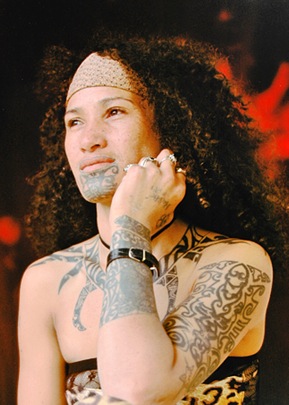Portrait of Vicki Te Amo
 From a photograph taken by Margaret Kawharu in 1993. Courtesy of the photographer.New Zealand, 1993
From a photograph taken by Margaret Kawharu in 1993. Courtesy of the photographer.New Zealand, 1993
Women generally had much smaller moko than men. On occasion, a woman who was the highest-ranking member of her lineage might also wear a full facial tattoo but this was rare. Usually women of status wore partial moko on the bottom half of the face.
The distinctive female chin tattoo (whakatehe) is believed to have developed in the 19th century. It may have been an abbreviation of an earlier design that was abandoned or adapted as a result of missionary influence. Similar to the male moko it usually incorporated a family design that featured small changes unique to the individual, signifying her generation and position within her family and tribal group and her eligibility to marry, and so on.
The Tohunga Suppression Act of 1907 made it illegal for men or women to wear or perform moko but it was women living in remote parts of the island that kept the art alive until the renaissance of the 1970s and 80s. Today, many Māori women are choosing to wear the chin tattoo once again. The lips may also be in-filled with ink too although this is a very painful process. Another favoured place is on the nostrils and on the forehead between the eyes. Historically too female moko was also seen on the neck, limbs and neck. The lady in this photograph, Vicki Te Amo, was tattooed by her husband. She wears a combination of the traditional chin moko and more contemporary designs on her collarbone and arms.
